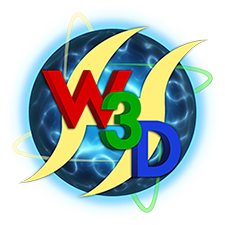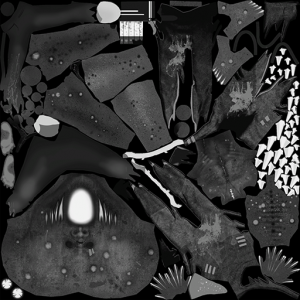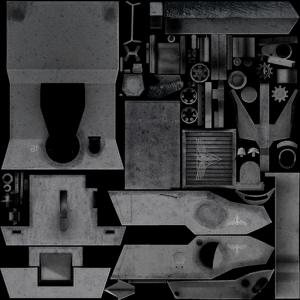-
Posts
1,035 -
Joined
-
Last visited
-
Days Won
2 -
Donations
0.00 USD
cfehunter last won the day on January 6 2018
cfehunter had the most liked content!
Reputation
30 ExcellentAbout cfehunter
- Birthday 09/14/1989
Member Title
- AR Team Founder
Profile Information
-
Gender
Male
-
Location
UK
-
Interests
Apoc Rising, Women, Cars, Tanks
Contact Methods
-
Steam
cfehunter
-
Skype
cfehunter
-
Yes, but not without significant amounts of work in the rendering code. We can basically do custom metadata now. It may come to adding multiple file versions in the exporter and in either case I have no intention of writing a WWSkin modifier in max. The stock skin modifier may not mimic the in-engine IK or anything, but the weighting tools are worlds better.
-
Frankly, it would be easier to port the game code to a new engine than re-write the core game systems *and* keep them compatible with stock renegade. That said, there's plenty that can be tweaked.
-
I can't really comment on the the editor. Shininess is supposed to impact specular intensity, but when the engine was moved over to DX9 with a DX8 emulation shader, instead of being actually DX8, the specular was broken and it hasn't been fixed since. Translucency likewise actually should work, but it'll only effect specific material types.
-
It depends on the workload. For renegade GPU skinning is probably the right choice as the GPU isn't the performance bottleneck and most skinned objects are using common skeletons. We can always move to CPU skinning, but our min-spec is a single core CPU and in that particular case it would absolutely murder the frame rate.
-

Apocalypse Rising Red Alert 2: Apocalypse Rising - Ask a developer!
cfehunter replied to OWA's topic in W3D Hub Discussion
Nations are randomly selected (filtered by map) for both teams at the start of the game. So if you're Korea you will be able to buy beagles if you're Russia, Tesla tanks -
Actually that's an upgraded W3D engine. We could make a UE4 version of AR/Reborn/Tiberium work on an iPhone, the engine itself is not the issue. The engine itself is about the most advanced, most highly optimised piece of gaming software in existence right now. How it actually performs for a game is much more down to the artwork and game specific code. Render state switching is what kills performance in most cases (unless you're doing something stupid in game logic)
-
It would be standalone but this has mostly turned into consideration of ue4 not udk
-
I have to point out that if you have a computer with parts created in the past decade that UE4 on minimum is likely to run and look better than W3D because it actually takes advantage of modern hardware features.
-
I wish I made more money, but the day to day work is something I actually enjoy. It helps that I get on OK with my coworkers and manager
-
Well even up to this point if you had subscribed for a single month at any time you could have had the full engine source code and the full editor source code. Now that I don't have to keep paying for updates I want to get the UE4 experiments going even more.
-
Just a small update to this. jonwil has invited me to work on W3D. So I'm going to be spending some time tweaking W3D and creating scripts in addition to looking at UE4. W3D being the priority.
-
I'm going to start poking around with UE4 tonight. See what I can get working and figure out how feasible things are. Again i'm not representative of the team. Just experimenting with stuff. I'll make a public thread for tracking how it goes
-
Pure grayscale makes plastic-like specularity. If that's what you're going for, then that's what you'll get with a pure grayscale specular map. It obviously comes down to artistic preferences, but if you want realistic specularity you'll need to approximate how the material reflects light - and many materials reflect more than just 0-255 shades of gray. Yeah granted, that allows you to modify the colour of the specular at the cost of tripling the size of the texture. There are multiple posts even in that thread you linked that say to just use a monochrome texture though. In any case, Blinn-Phong is plasticy regardless of what you do. Which is why modern games have moved over to PBR now. On that note, this is really worth a read.
-
You should tell that to the Unity devs. They use the alpha channel of the normal map for theirs (in the default shaders), it's nothing but 0-255. I've attached two specular maps (downsized for size reasons), one made by Ben and one made by another friend of mine. This is the most common use case. If the shaders you plug your art into use colour spec maps that's great, but it's not the norm
-
Normal Mapping - You can do this in any program you feel like doing it in. It's hard to explain without going into technical detail about how they work. But here goes. I'm going to talk about tangent space normal maps here because world space ones are weird and hardly used any more. The red, green and blue values of each pixel of your texture represent a 3D vector, an arrow in 3D space that points in a direction. Red represents X, Green represents Y and Blue represents Z. A perfectly flat surface will have a normal pointing directly along the Z axis. (Put a pencil point down on a desk, that's a flat normal). This is why normal maps appear to be mostly blue. Relative to the geometry most surfaces are relatively flat. Now there are two major ways of creating a normal map. Using actual 3D information or faking 3D information. The preferred way for most "actor" models (players, vehicles, weapons, etc) is to create a high poly version of your model and then to render the detail of the high poly model onto a lower poly version of the same mesh. Tools such as Z-Brush make this fairly trivial to do and are really worth investing in. If you can't do this, or require a normal map for a general reusable texture, then you can manually paint a normal map and use the knowledge of what the Red Green and Blue channels of the map do to get the effect you want. I recommend using something like the CrazyBump plugin for photoshop to give you a base. Specular Mapping Paint over your unwrap in grey scale. The closer to white something is the shinier it will appear to be in game. Ambient Occlusion Mapping Effects how much ambient lighting effects a part of your model. You can use this to create global highlights and lowlights. Diffuse Mapping Fancy name for colour mapping. In scientific lighting language "Diffuse" means the light that is reflected from a surface. So it's what you actually see when you look at an object. This is where you actually paint stuff.




